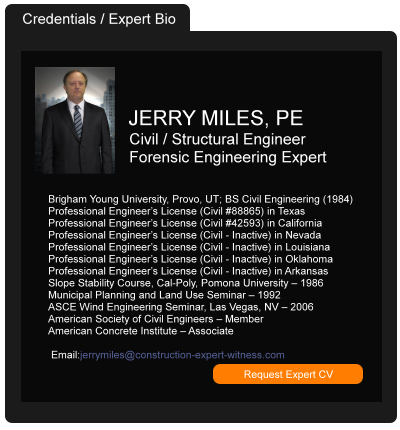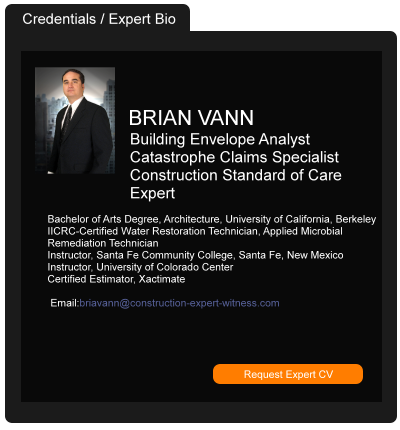The BUILDCHAIN Project Enhances Data Exchange and Transparency in the EU Construction Industry
January 23, 2023 —
Aarni Heiskanen - AEC BusinessTrace Labs, a WEB 3 developer, joins the EU’s efforts to create a smarter and more sustainable built environment with the
BUILDCHAIN project. With its 11 EU partners, Trace Labs aims to improve efficiency, reduce errors, and increase transparency and trust in construction.
Efficient, transparent, and trusted data exchange is a powerful tool for driving sustainability, resilience, and energy efficiency in construction. However, there are several obstacles to trusted data exchange in the industry today:
- Data silos: Construction projects involve multiple parties and stakeholders, each of which may have its systems for storing and sharing information. This can lead to data silos and a lack of coordination, making it difficult to access and trust the data.
- Lack of standardization: Construction projects may use different formats for storing and sharing data, leading to difficulties in comparing and combining information from various projects.
- Data security: Construction projects often involve sensitive information, such as building plans, materials lists, and inspection results. Ensuring this information is secure and protected from unauthorized access can be a significant challenge.
- Lack of incentives: There are often few incentives for construction companies and other stakeholders to share data and collaborate on projects, making establishing trust and transparency challenging.
Read the court decisionRead the full story...Reprinted courtesy of
Aarni Heiskanen, AEC BusinessMr. Heiskanen may be contacted at
aec-business@aepartners.fi
Second Circuit Brings Clarity To Scope of “Joint Employer” Theory in Discrimination Cases
May 02, 2022 —
Kevin J. O’Connor, Aaron C. Schlesinger & Lauren R. Davis - ConsensusDocsThe “joint employer” doctrine has been used with increasing frequency by the plaintiffs’ bar to broaden the scope of target defendants in discrimination cases beyond those who would be traditionally regarded as the employer. This is true even in the construction industry, which has seen a rise in cases where general contractors (“GC”) or construction managers (“CM”) are being targeted when discrimination is alleged on a construction project, even when the GC or CM is far removed from the underlying events and had no control over the employees in question.
Examples of this phenomenon are where a claim of harassment or discrimination originates in the lower tier ranks of subcontractors, or even where there is a claim involving an independent contractor on a project and a discrimination lawsuit ensues.
Until now, the Courts in the federal circuit which includes New York City (the Second Circuit) have been left to decipher a patchwork of case law to ascertain the scope and extent of joint employer liability in discrimination cases. In a move that is certainly welcomed by contractors, the Second Circuit Court of Appeals in Felder v. United States Tennis Association, et al., 19-1094, recently issued a comprehensive decision which provides a helpful summary of what must be pled and proven to broaden liability under the joint employer theory in discrimination cases. Felder provides a roadmap for risk mitigation by contractors looking to limit such claims in the future or to meet them head on when they do arise.
Reprinted courtesy of
Kevin J. O’Connor, Peckar & Abramson (ConsensusDocs),
Aaron C. Schlesinger, Peckar & Abramson (ConsensusDocs) and
Lauren R. Davis, Peckar & Abramson (ConsensusDocs)
Mr. O'Connor may be contacted at koconnor@pecklaw.com
Mr. Schlesinger may be contacted at aschlesinger@pecklaw.com
Ms. Davis may be contacted at ldavis@pecklaw.com
Read the court decisionRead the full story...Reprinted courtesy of
SB800 Not the Only Remedy for Construction Defects
October 01, 2013 —
CDJ STAFF“We anticipate an increase in residential construction defect litigation in response to this ruling,” David Frenznic, a construction defect lawyer at Wilke, Fleury, Hoffelt, Gould & Birney LLP told the Central Valley Business Times. Mr. Frenznic was responding to an August ruling by the California Court of Appeals that found that SB800 does not create the only remedy for homeowners with construction defects.
“Homeowners who suffer actual damage as a result of construction defects have a choice of remedies,” said Mr. Frenznick. SB800 established a shorter statute of limitations for construction defect claims, however, “the ruling makes clear that common law claims are still governed by the longer statues of limitations.”
Read the court decisionRead the full story...Reprinted courtesy of
Fla. Researchers Probe 'Mother of All Sinkholes'
August 24, 2017 —
Thomas F. Armistead - Engineering News-RecordIt will take months to complete remediation of the largest sinkhole in Pasco County, Fla.’s recent history, county officials say. Seven houses have been lost or condemned since the sinkhole was reported at 7:21 a.m. on July 14. That day, two houses collapsed into the hole, which initially measured 225 ft long and 50 ft deep. As the cavity’s dimensions grew to between 260 ft and 180 ft, the county red-tagged five additional houses.
Read the court decisionRead the full story...Reprinted courtesy of
Thomas F. Armistead, ENRENR may be contacted at
ENR.com@bnpmedia.com
Colorado Court of Appeals Defines “Substantial Completion” for Subcontractors’ Work so as to Shorten the Period of Time in Which They Can Be Sued
October 20, 2016 —
David M. McLain – Colorado Construction Litigation BlogOver the past few years, there has been a battle raging on in district courts and arbitration hearing rooms throughout Colorado regarding when a subcontractor’s work is to be deemed “substantially complete,” for purposes of triggering Colorado’s six-year statute of repose. C.R.S. § 13-80-104 states, in pertinent part:
Notwithstanding any statutory provision to the contrary, all actions against any architect, contractor, builder or builder vendor, engineer, or inspector performing or furnishing the design, planning, supervision, inspection, construction, or observation of construction of any improvement to real property shall be brought within the time provided in section 13-80-102 after the claim for relief arises, and not thereafter, but in no case shall such an action be brought more than six years after the substantial completion of the improvement to the real property, except as provided in subsection (2) of this section.
* * *
(2) In case any such cause of action arises during the fifth or sixth year after substantial completion of the improvement to real property, said action shall be brought within two years after the date upon which said cause of action arises.
C.R.S. § 13-80-104 (emphasis added).
As the battle raged on at the trial court level, subcontractors and design professionals argued that their work should be deemed “substantially complete” when they finished their discrete scope of work within a project. Developers and general contractors, seeking to maintain third-party claims against the subcontractors and design professionals, typically argued either that the subcontractors’ and design professionals’ work should be deemed “substantially complete” upon the issuance of the final certificate of occupancy on the project, or upon the issuance of the final certificate of occupancy for the last building within a project on which the subcontractor or design professional worked. Trial court judges and arbitrators have been split on this issue, with perhaps a slight majority favoring one or the other approaches advocated by developers and general contractors, that the subcontractors’ and design professionals’ work is “substantially complete” upon the issuance of the last certificate of occupancy in a project (the minority view) or upon the issuance of the last certificate of occupancy for the last building within a project on which the subcontractor of design professional worked (the majority view).
Read the court decisionRead the full story...Reprinted courtesy of
David M. McLain, Higgins, Hopkins, McLain & Roswell, LLCMr. McLain may be contacted at
mclain@hhmrlaw.com
Grupo Mexico Spill Sparks Public Scrutiny of $150 Million Mop-Up
September 17, 2014 —
Nacha Cattan – BloombergMexico is sending federal officials to Sonora state to oversee Grupo Mexico SAB (GMEXICOB)’s $150 million cleanup of a copper mine spill that the government says contaminated the water supplies of at least 24,000 people.
The special commission of environmental and agriculture ministry officials will monitor the company’s pledge to clean Mexico’s worst mining spill, which occurred Aug. 6 in the northern state that borders Arizona.
Grupo Mexico said last week it would create a $150 million trust after its Buenavista del Cobre operation dumped 11 million gallons of copper sulfate solution into two Sonora rivers. Industrias Bachoco SAB de CV and Ford Motor Co. (F) operate plants in Hermosillo, south of the contaminated waterways.
Read the court decisionRead the full story...Reprinted courtesy of
Nacha Cattan, BloombergMs. Cattan may be contacted at
ncattan@bloomberg.net
Big Bertha Lawsuits—Hitachi Zosen Weighs In
January 31, 2018 —
John P. Ahlers – Ahlers Cressman & Sleight PLLCIn a recent article published by
Seattle Business Magazine, the Japanese manufacturer of the much-maligned tunnel machine (nicknamed “Bertha”) provided its version of events and its position to the public. The interview took place after executives from Hitachi Zosen were not invited to the ceremony celebrating Bertha’s breakthrough at the end of its two-mile journey underground Seattle. Ultimately, apparently, Seattle Tunnel Partners (“STP”), the general contractor for the project, and Washington State Department of Transportation (“WSDOT”) agreed that Hitachi Zosen executives could attend the event, but they were not allowed to stand with other dignitaries on a specially-built viewing platform. The $3.2 billion Alaska Way Viaduct replacement project is embroiled in a number of legal controversies. Now that the tunnel is finished, Hitachi Zosen has finally decided to tell its side of the story.
Hitachi’s problems started on December 5, 2013, three days after the tunnel-boring machine (“TBM”) hit a 120-foot long, eight-inch diameter steel well casing (the project DRB has determined that the pipe was a differing site condition), the TBM overheated and ground to a halt. The project was shut down almost two years while the TBM was being repaired. According to Hitachi Zosen, it always worked hard to get the job done. “We wanted to finish the tunnel and make Seattle happy with the results,” said Hidetoshi Hirata, the general manager for Hitachi Zosen.
Read the court decisionRead the full story...Reprinted courtesy of
John P. Ahlers, Ahlers Cressman & Sleight PLLCMr. Ahlers may be contacted at
john.ahlers@acslawyers.com
Overview of New Mexico Construction Law
June 25, 2019 —
Walter F. Crowson - Snell & Wilmer Under Construction BlogWe’ve seen an uptick in out-of-state companies working on construction projects in New Mexico. The following is an overview of some of the nuances of New Mexico construction law about which companies may want to be aware.
Construction Contract Issues
Limitation of Liability Clauses are usually Enforceable, but Anti-Indemnity Clauses Are Not
New Mexico courts have enforced limitation of liability clauses included in construction contracts. See Fort Knox Self Storage, Inc. v. W. Techs., Inc., 140 N.M. 233, 237 (N.M. Ct. App 2006). New Mexico law recognizes the difference between contracts that insulate a party from any and all liability and those that simply limit liability. Fort Knox Self Storage, Inc., 140 N.M. 233 at 237. An exculpatory clause immunizes a party from liability, whereas a limitation of liability clause merely curtails liability. Id. A limitation of liability clause has been held not to violate New Mexico public policy because the party “still bears substantial responsibility for its actions.” Id.; see also Cowan v. D'Angelico, 2010 WL 11493789, *6 (D. N.M. Apr. 26, 2010).
Read the court decisionRead the full story...Reprinted courtesy of
Walker F. Crowson, Snell & WilmerMr. Crowson may be contacted at
wcrowson@swlaw.com


































































